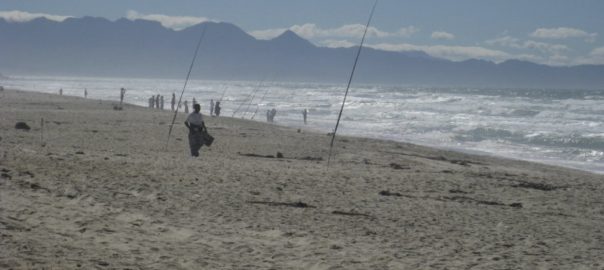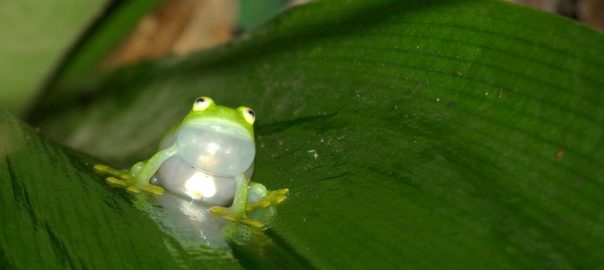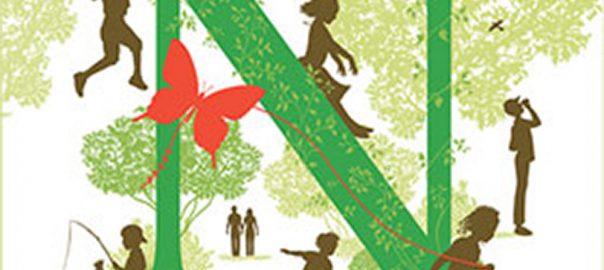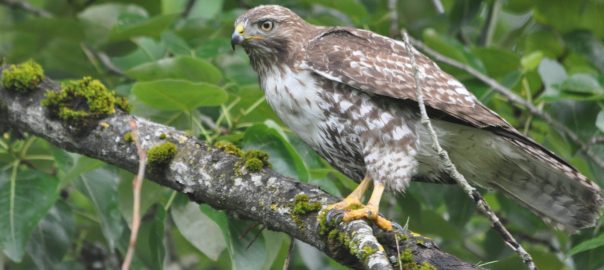Its 11 o’clock on a Saturday night and my husband and I have just returned home from a dinner party. Driving home we encountered Chital deer (Axis axis) grazing outside the Table Mountain National Park boundary and right on the verge of a busy highway. These deer don’t belong here, and by here I mean Cape Town South Africa, but also, and more significantly in the immediate moment, on the side of this busy highway. Their history is a common colonial story of strategic animal introductions. The fact that they are grazing next to the highway where they could cause a nasty accident is what gets the good citizen in me worked up. (I have some purist conservation issues on this score too, but I set these aside for now.*)
I call the after-hours number for the National Park to report animal related issues. I feel some urgency and when I get through, am astounded by the operator’s nonchalance. He suggests they are out a little earlier than usual, and that perhaps (with a laugh) this is because it is Saturday night. I feel the wind out of my sails and he goes on to assure me that they will stick to the verge, as they do on many nights of the week and that I can go to bed now and have a peaceful night’s sleep. His cheerful and tolerant tone prompts me to ask if he gets a lot of calls like mine reporting seemingly bizarre nature encounters around the mountain late at night. He says his best ever was the tow-truck driver who called in, terrified, to report a ‘giant goat’ walking through down-town Cape Town at 3 am. Evidently a Himalayan tahr (Hemitragus jemlahicus), from a pair of zoo escapees in the 1930s that formed a population on Table Mountain. A tahr downtown at 3am is a stirring thought. I go to bed smiling at the uncomfortable bed fellows of nature and city.
Living with so much nature right in the heart of your city can be a challenging business. Its funny really because it is often nature that informs where we put our cities in the first place (that thought-provoking cartoon by Matthew Diffee comes to mind). How we manage the process of taming, ‘making benign’, and what we choose to harness, and what we choose to discard in the ongoing process of city building is something that changes through time and across space. I am intrigued by this; the experience of nature in our cities and how what we see and brush up against is different for all of us, different to people at different times, and different to people at the same time, and it begs the question ‘how do we forge a nature that works for everyone?’
While the formation of the City of Cape Town is not a singular story, contemporary Cape Town is in many respects unique. Cape Town is small city of about 3.7 million people. The City is sprawling (an area of 496.7 square kilometres or 191.8 sq mi) and retains the separatist spatial form of an apartheid city with the more affluent and still whiter suburbs close to Table Mountain and the city bowl, and dense lower income housing and extensive informal settlements out to the north of the city bowl on the sandy flat lands known as the Cape Flats. The gini coefficient (57.8% in 2011 for South Africa) is stark, and pressure to supply services and housing and broadly to address development discrepancies is intense. Situated on a peninsula, Cape Town has an extensive coastline, hosts the 221 square kilometer (85 square mile) Table Mountain National Park at its heart, and has a staggering 3350 plant species within its metropolitan boundary. Of these, 190 are endemic to the City itself. The City hosts 19 of 440 National Vegetation Types and of 21 nationally recognized critically endangered vegetation types, an astounding 11 are in the City of Cape Town. Both the conservation and development agendas are high. How nature is experienced — and note here I do not say how it is valued, but how it is experienced — is hugely varied across the City.
If we cast our gaze way back we see the first inklings of these varied views and uses of nature. As much as 2000 odd years ago the Khoi, cattle keeping people, started to include the Cape in larger transhumance patterns. The Cape was by no means unoccupied and they found the San hunter gatherers already well ensconced. Here two different scales of engagement led to natural resource conflict. Evidence suggests that the San manipulated the natural environment with small scale patch burning to stimulate bulb species, and attract mammals to localized patches with the new flush of grazing where they could be easily stalked and hunted. The Khoi however took a much larger view of landscape management necessitated by their large herds of sheep and cattle that needed to be fed and watered. They too actively burnt tracts of the indigenous fire-prone and fire-adapted vegetation to stimulate grazing for their herds, but on a scale that was undoubtedly disruptive to the environmental engagement of the local San. In turn, as the San hunters looked around in vain for the mammals to hunt, now chased off by large scale fire, they naturally turned their bow and arrows to the next most edible thing on the landscape, the Khoi cattle. Substantial conflict ensued.

Just as the perennial water had attracted the Khoi, and was no doubt a significant asset to the San, it was the strategic factor that put the Cape in such high demand from European trade vessels. The long journey around Africa to secure spices from the East following the shut-down of the overland route with the establishment of the Ottoman Empire, was arduous in the extreme. What was needed was a place to stop, grow a few veggies, trade for some fresh meat from the locals, and restock the water casks and wood supplies.
The ‘Cape of Good Hope’, as it was known then, checked all these boxes. From on board the ship, after a few months at sea and a few less teeth to show for the trip, the majestic mountain, its vegetated slopes and sparkling springs were most alluring, and no doubt bound up in the thrill of the ‘spice rush’. Of the various traders plying the route around Africa, it was the Dutch East India Company who managed to secure the Cape as a key point in their global economic endeavors.
What they found all too quickly was that while the Cape had the natural environment to meet many of their needs, once on shore the environment was extremely harsh. Early diaries have dreadful descriptions of blood curling encounters with the abundant wild animals. The station commander (supposedly sent to this particular post to be out of the public gaze for a few years following a social embarrassment) wrote of a lion entering a dwelling and taking a domestic dog from inside. Another writes of a young lady being taken off the back of an open wagon, again by a lion.
Can you begin to imagine the horror? Quickly a bounty was placed on the head of large carnivores and so the process of ‘taming’ began. The first century of environmental engagement was severe. Wood reserves were rapidly depleted, uninformed attempts to emulate the locals in the use of fire saw extensive, ill-timed and uncontrolled fires, animal populations were decimated, and fresh water reserves were frequently fouled. The pier that had been built into Table Bay had to be extended as it became inundated with eroded top soil from the rapidly denuded mountain slopes.
Despite these harsh conditions, to many Cape Town meant freedom from testing circumstances in Europe and numerous of the early writings of the City are also of its great beauty, and many chose to stay.

And slowly the City of Cape Town came into being. Later eras saw rapid growth with the event of gold and diamonds in the interior. The switch to British rule opened the city up to a myriad of new, and largely problematic, plant species. And so a new series of environmental manipulations (the consequences of which we continue to manage today) was added to the ongoing process of sifting, sorting, harnessing and discarding nature in the process of city building.
For example the introduction of Australian Acacias to stabilize dune fields — a welcomed intervention at the time when massive dune fields, historically impassable, were stopped in their tracks, but hugely problematic once these plants who shared many of the key characteristics of our own indigenous flora took off at a great pace in the absence of their natural enemies. Loathed by conservationists, these extensive stands of alien trees are an important source of fuel wood to poor households in Cape Town today. Forests of alien Pine trees are similarly viewed by conservationists; black-booked for their excessive consumption of water in a water-scarce city, contributing significant fuel loads and shifting fire regimes, and altering soil properties and shading out indigenous species. In turn these forest patches are revered by middle-class suburban dog-walkers who have fought vehemently for their retention in the urban landscape, taking out double page advertisements at considerable expense in local newspapers declaring their affinity for these trees in the a ‘shout for shade’ campaign.

And there are just as many views on remnant patches of indigenous flora. The few remaining patches of indigenous flora are of considerable conservation value and come under ongoing development pressure in particular for housing. These are often seen as harbors of criminals and their dirty dealings. The protection of these ever-shrinking patches is championed by city and national conservation agencies as well as numerous civic groups from all areas of the City. They are also used by Abakwete, Xhosa male initiates, who are required to spend time a period of time in the wilderness as part of the process of reaching manhood. In cities they are limited to these remnant patches.

So there you have it: different views through time, and different views at the same time. A solution in one century, and a curse in the next. A threat to one contemporary agenda, and a livelihood solution to another.
Some things we have not managed to tame, and parts of our city most certainly remain wild. In these instances it is my belief that we turn to managing our urban population around these factors. Cape Town has a fierce wind, historically called ‘the Cape doctor’ especially by those returning to Europe from India, for whom the cool wind was a welcomed change.
It is strong wind though (wind speeds of 160 km/h or 100 mph have been measured in Table Bay) and early settlers were astounded by its ferocity. One wrote a vivid description of seeing fully grown cabbages pulled out of the ground by the wind (next time you pick up a cabbage in the grocery store and feel its solid weight in your hands give this some thought). We also have a water table that bubbles up in the winter months on the Cape Flats. The Cape Flats remain largely dune fields. It is to these outer realms, these wilder sides of our city, that the poor are relegated. It makes me think that just as that early Dutch commander was sent to the wilds of the Cape in 1652 to be out of the public gaze for a while, so too do we relegate our urban poor to the wilds of the contemporary city. How nature is experienced from the different vantage points around the mountain is assuredly different.

It brings us back to the difficult question ‘how do we forge an urban nature that works for everyone?’
While we may all agree that we do not want lions roaming our streets, where do we draw the more subtle boundaries in the process of taming, and how do we avoid winding up with something that is sterile and vulnerable This is a significant social challenge.
Its messy, but I like a mess and one might well ask who would get into urban ecology if they had an aversion to some degree of muddle? I take heart in the writings of the likes of Evans (take a look at this great paper) who presents the city as a place of experimentation and suggests that it is from among the very muddle of cities, with their social and structural diversity, that we are likely find our solutions to the complexities of living harmoniously in cities, and living with and securing nature in our cities.
Pippin Anderson
Cape Town, South Africa
*Both the Tahr and Chittal deer populations have since targeted for removal from the Mountain. The eradication of these problematic species is a necessary and welcomed conservation move.
About the Writer:
Pippin Anderson
Pippin Anderson, a lecturer at the University of Cape Town, is an African urban ecologist who enjoys the untidiness of cities where society and nature must thrive together. FULL BIO












An excellent and insightful article Pippin, with great historical anecdotes.